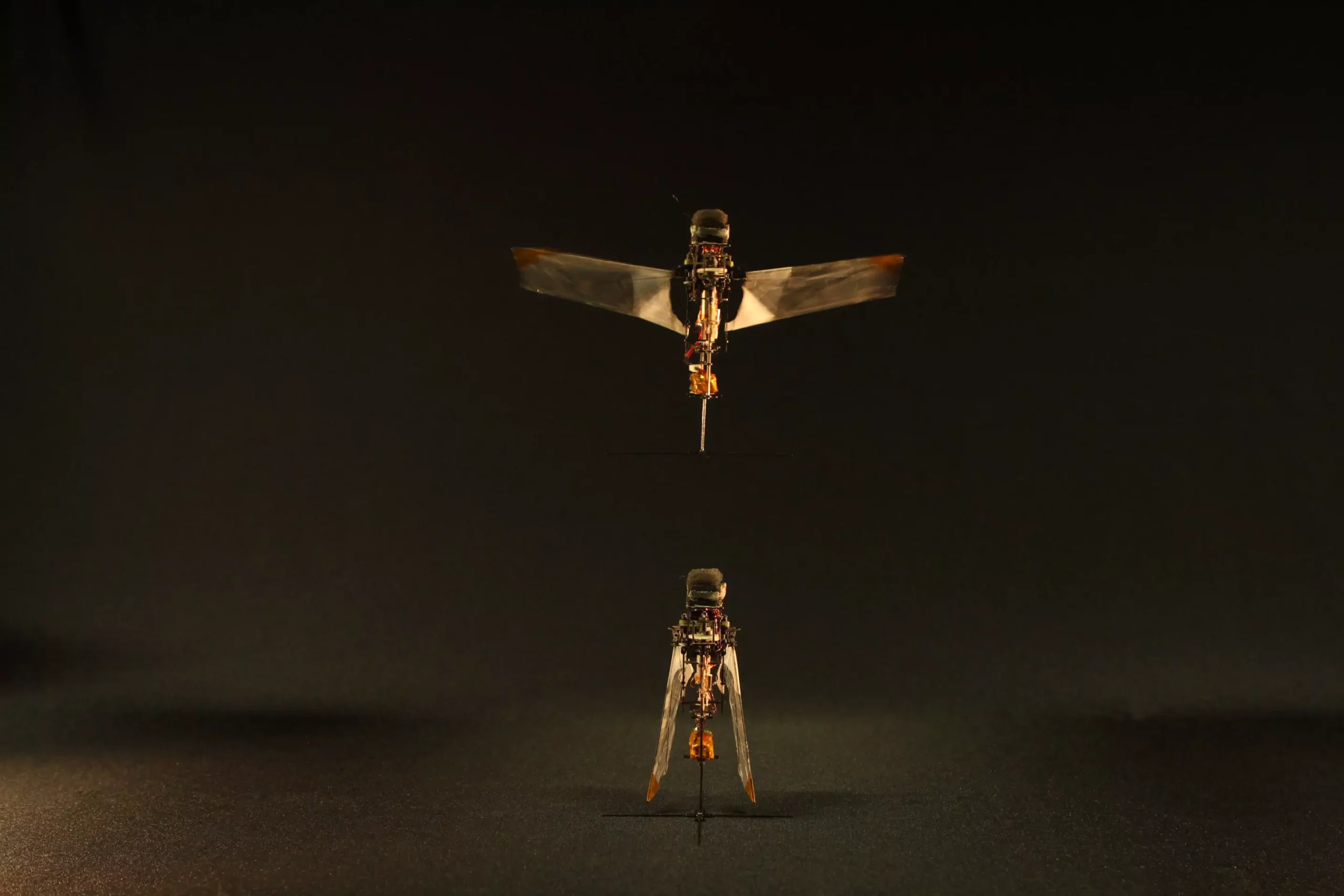

The study of wing dynamics in flying animal species has long been a source of inspiration for the development of flying robotic systems. While birds and bats have been extensively studied for their wing movements, the processes underlying the wing movements of insects, such as rhinoceros beetles, have remained poorly understood. Recent research conducted by a team at Ecole Polytechnique Fédérale de Lausanne (EPFL, Switzerland) and Konkuk University (South Korea) aimed to shed light on how these herbivorous insects deploy and retract their wings.
One of the key findings of the study was the discovery of passive wing deployment and retraction mechanisms in rhinoceros beetles. Unlike birds and bats that use active muscle movements to flap their wings, beetles leverage their elytra and flapping forces to passively deploy their wings for flight. Similarly, when they land, they use their elytra to push the hindwings back onto their body in a passive manner. This insight led to the development of a flapping microrobot that can mimic this passive wing deployment and retraction process.
By studying the dynamics of beetle wings, researchers were able to develop a flapping microrobot that weighs 18 grams and can passively deploy and retract its wings. This microrobot, which is approximately two times larger than an actual beetle, utilizes elastic tendons at the armpits to allow for passive wing closure. The robot can deploy its wings to take off and maintain stable flight by activating flapping motion, and then retract its wings passively after landing by stopping the flapping motion. This process eliminates the need for extensive actuators, making the robot more efficient and lightweight.
The potential applications of flapping microrobots with foldable wings are diverse. They could be used for search and rescue missions in confined spaces, such as collapsed buildings where humans cannot access. The tiny scale of these robots allows them to fly into narrow spaces and switch between flight and crawling modes as needed. Additionally, they could be used by biologists to study the biomechanics of insect flight or disguised as spy insects to explore the lives of real insects in forests where conventional drones are not applicable.
While the initial tests of the flapping microrobot have shown promising results, there is still room for improvement and further validation in real-world scenarios. Future studies could explore whether other insects, such as tiny flies, use similar passive strategies for wing deployment in environments with limited muscle availability. This ongoing research could lead to advancements in the field of biomimetic robotics and open up new possibilities for engineering applications and scientific exploration.
The insights gained from studying the wing dynamics of rhinoceros beetles have paved the way for the development of innovative flapping microrobots that mimic the passive wing deployment and retraction mechanisms found in nature. These robots have the potential to revolutionize search and rescue missions, biological studies, and engineering research, offering a glimpse into the future of robotics inspired by insect flight.
Rogue waves have long been a subject of fascination and terror in maritime lore. These…
As the world grapples with public health challenges, especially those posed by infectious diseases, the…
The Sombrero Galaxy, also known as Messier 104, embodies a breathtaking blend of spirals and…
In recent advances in quantum electronics, a groundbreaking discovery leveraging the concept of kink states…
In the intricate tapestry of nature, ice often exists in a delicate balance with liquid…
In an astonishing event that captured global attention, a rogue object from beyond our Solar…
This website uses cookies.